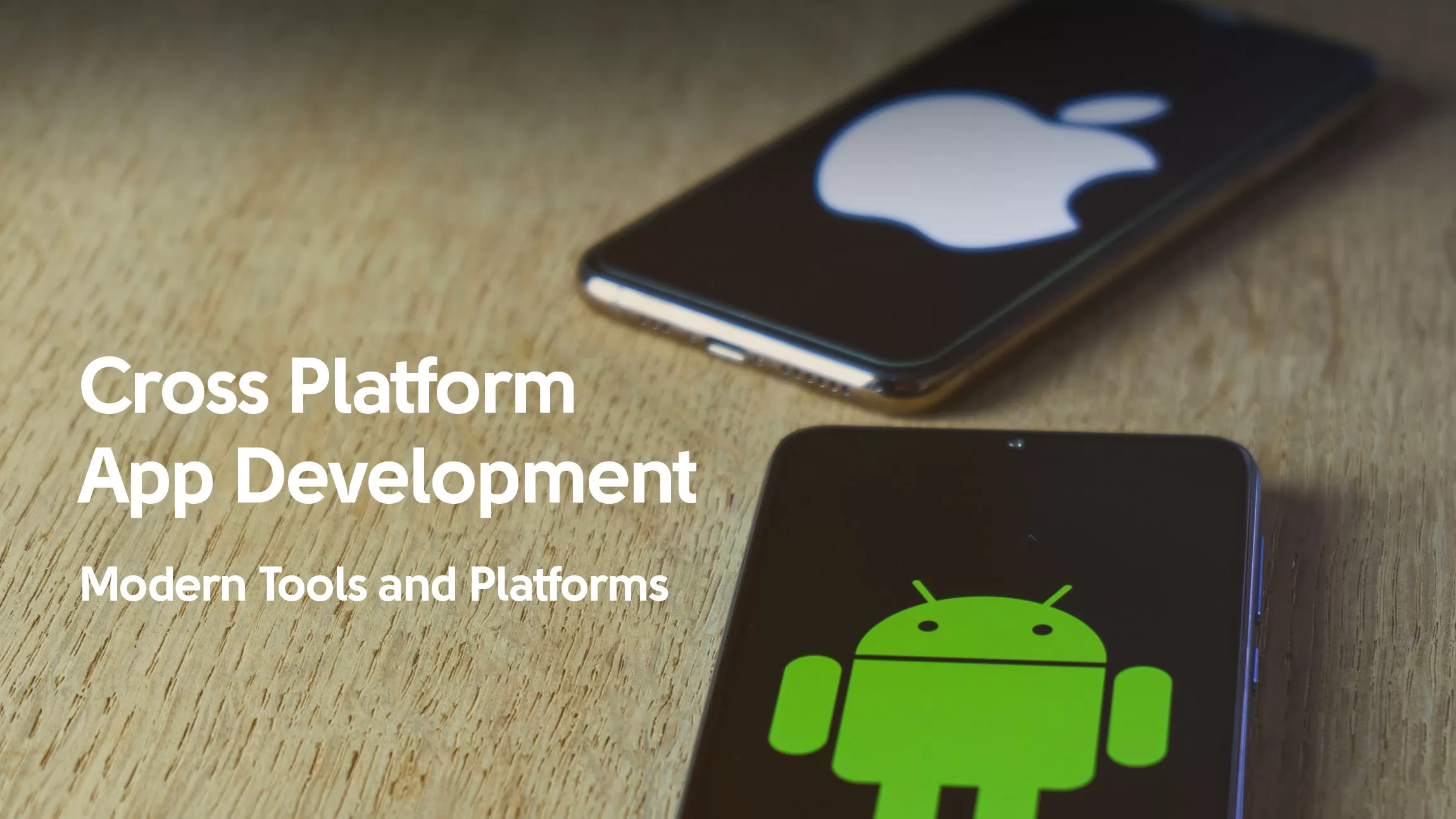
Cross Platform App Development: Modern Tools and Platforms
There are two types of development for mobile applications: native and cross-platform. Using native software development tools can be costly and complex. Every organization is interested in reducing costs without having to compromise quality or the user experience, which is why organizations are dipping their toes into cross-platform app development frameworks as a means to access high-quality development tools at an affordable price that help meet modern business demands.
The pandemic accelerated the use of mobile devices, and mobile usage went neck in neck with web browsers to grab the most popular application touchpoint. With more and more wearables and immersive devices such as smartwatches, voice-driven devices, and smartphones, it’s very clear to see that mobile shows no sign of slowing down.
As a result, interaction modes are different and more diverse, ranging from gestures, touch, type, natural language, and more, further expanding the digital user journey. This reflects the natural journey application users are on, looking for experiences that support their modes and devices.
Cross-platform app development platforms help developers save costs and keep development times short, all while producing apps that can function on multiple mobile platforms, compatible with more than one operating system like iOS or Android.
When choosing between native and cross-platform app development, there are several aspects to consider as both present unique advantages and disadvantages. For example, native apps use specific programming language for specific operating systems, making them inherently more reliable and able to maximize the functionalities and features of a specific platform. But, as all good things, the price point for native apps is relatively high when compared to cross-platform apps.
In this article, we’ll cover why you should invest in cross-platform development and the signs you need to spot to make the right decision when you invest in this app development approach.
How to Develop a cross-platform app
For everyone reading this who might need a quick refresher, cross-platform applications are applications created for multiple platforms so they seamlessly work across different operating systems.
With cross-platform app development, developers can leverage a single code system to create applications that can function correctly across different platforms. As a result, using cross-platform app development enables you to release products faster and with better quality, and as a plus, your app will be consumed by a broader audience.
To develop your app using a cross-platform app development platform, you need to assess your unique needs and business goals.
Startup companies are amongst the most prominent advocates of cross-platform app development thanks to key qualities like streamlined development, quick turnaround times, and cost-effectiveness.
Mobile app cross-platform development: tools and frameworks
Mobile cross-platform app development is robust and ever-evolving, with new and exciting tools making an appearance regularly. Here’s a list of some of the most helpful frameworks you can leverage nowadays:
- Xamarin. An oldie but goodie, Xamarin cross-platform app development is open-source and was launched back in 2011 that uses C# and .NET, making it possible to build native Android and iOS apps. From authentication to storage, as well as Azure Cognitive Services, cross-platform app developers get an immersive experience that helps them tailor apps to specific user needs. Developers favor Xamarin because of its ease-of-use and codebase reusability.
- Ionic framework. Based on AngularJS, Ionic is a powerful HTML SDK cross-platform for mobile app development that helps developers build high-quality user interfaces for mobile apps with ease and customization features. The Ionic framework is capable of emulating developed apps thanks to the built-in Android Virtual Devices (AVDs). Developers favor Ionic for its user-centric features and creative user interfaces.
- Sencha. One of the best cross-platform app development tools that helps cross-platform app developer design, build, and test data-intensive applications, UI frameworks, and testing solutions. Sencha is a multi platform app development tool that uses enterprise-class Java and JavaScript frameworks for progressive and modern standards to deliver data-rich applications for desktop, smartphones, and tablets. Developers favor Sencha because of its +50 built-in and customizable UI widgets as well as its impressive back-end data package.
- Flutter. Released by Google, Flutter is one of the most modern frameworks (and the youngest!) in this list. Flutter is an open-source cross-platform app development platform that creates native interfaces for Android and iOS from a single codebase. It also offers development tools for web, desktop, and embedded applications. Developers favor Flutter because of its inbuilt graphic engine and efficiency.
- React Native. Born in 2015 in answer to the high demand for hybrid frameworks. React Native is a JavaScript-based cross-development platform that has positioned itself as one of the most popular frameworks thanks to its code reusability feature and ready-to-use functionality that dramatically reduces development time. To top it off, React Native is well-known for rendering native-like interfaces, which developers love. All in all, developers favor React Native thanks to its UI focus, its large community, and compatibility with third-party plugins.
Testing Cross-platform apps
Applications can’t be tested for every configuration, but you can test items on specific platforms and specifications to ensure it’s working as intended. Cue cross-platform app development frameworks.
Testing in cross-platform app development frameworks is no easy feat. Because your apps require easy accessibility from either desktops, phones, tablets, and more, testing is the gateway to understand if your app is usable to meet the needs of real users.
Cross-platform testing is central to software quality assurance processes as it helps ensure any application can be accessed via any platform and it’s typically done by testing across multiple devices to detect the defects and issues that need to be fixed.
Cross-platform testing helps you see how your app will behave in a myriad of situations, helping you detect issues on time to deliver an enjoyable user experience.
Here are some of the most prominent mobile and web cross-platform testing tools you should keep an eye out:
- Appium. HTTP server available for iOS and Android to manage WebDiver sessions. Appium supports tests in any framework and language, making it possible to automate native, mobile, hybrid, and web applications.
- Calabash. Xamarin-maintained, Calabash is made up of iOS and Android open-source libraries for testing hybrid and native apps. In Calabash, test cases written in natural language are translated to test scripts running within the framework. It can work with Ruby, Java, .NET, and more.
- Selendroid. Intended for Android apps, Selendroid is an open-source framework that interacts with several emulators and devices with no need for app code modification. The testing framework can engage with multiple devices simultaneously for efficiency test coding.
- Frank. Open-source cross-platform testing framework that combines the features of JSON and cucumber. The framework writes structured requirements, acceptance tess, and it even comes with a Symbiote app inspector. Testers turn to Frank for emulators and web-based apps mostly.
- Browsershots. Popular cross-browser testing framework that offers a rich variety of features and customizations, as well as comprehensive support of Internet Explorer, Google Chrome, Firefox, Opera, Safari, and many more.
Conclusion
Cross-platform app development tools are pivotal to the success of your apps and redefining your app development processes along the way as they streamline, optimize, and secure your apps. At Svitla Systems, we’ve worked on a large number of client projects to develop mobile apps cross-platform, giving us a vantage point of what’s needed, the latest trends, and where app development is going.
Svitla Systems app developers are well-versed in cross-platform app development tools and frameworks, and can easily navigate the nuanced of each tools to maximize efforts while helping you protect your budget.
Our experienced Svitla Systems team can help you choose the perfect cross-platform app development framework, taking into account your goals and needs for the project. If you wish to learn more about our cross-platform app development service offerings, reach out to one of our representatives and we’ll be happy to give you all the details.
Let's discuss your project
We look forward to learning more and consulting you about your product idea or helping you find the right solution for an existing project.
Your message is received. Svitla's sales manager of your region will contact you to discuss how we could be helpful.



